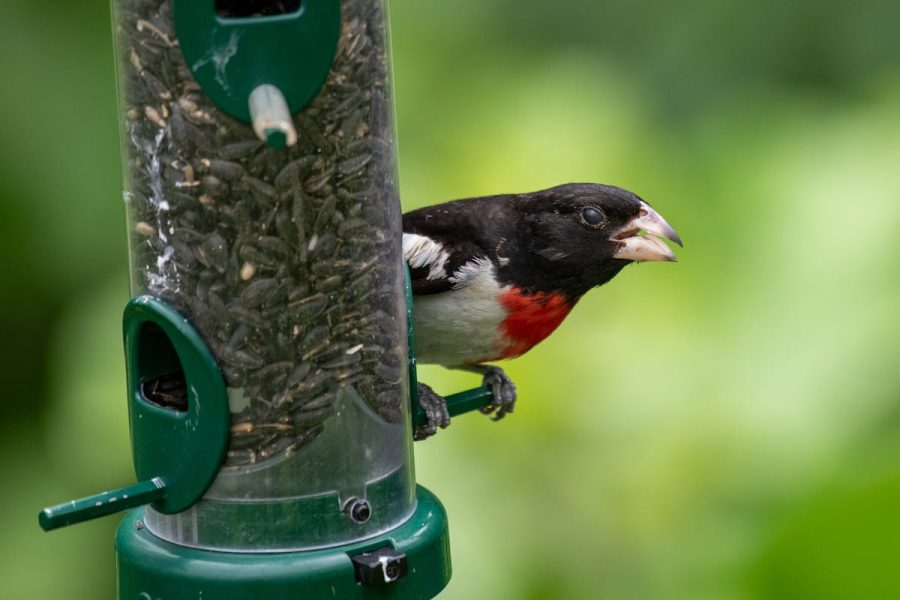
Evening Grosbeak
The evening grosbeak is a passerine bird in the family Fringillidae finch family of North America.
Bird Introduction- :
With their bulk and heavy build, short tails and big bills, evening grosbeak and Eurasian hawfinch look alike. The adult evening grosbeak has a short black tail, black wings and a large pale bill. There are a few different adults: the male has strong yellow around the forehead and body, a brown head, and a large white mark on the wing, whereas the female adult is primarily olive-brown with a grey underbelly and white wing patches.
Basic Info:
- Scientific Name: Hesperiphona vespertina
- Lifespan: 16 years(oldest)
- Size: 6.3 to 8.7 in
- Weight: 1.9 oz
- Wingspan: 12 to 14 in
Evening Grosbeak Life History and Breeding:
Evening grosbeaks, which are forest specialists, spend all their time year-round in Canada and the western mountains of the United States. (The birds expanded into New England during the early 1900s.)
When nesting, they prefer high up in trees or large shrubs, such as red, black, Norway, white, and Engelmann spruces; white, Jeffrey, and ponderosa pines; and others.
Evening grosbeaks go absolutely nuts over their favorite feeder food: black oil sunflower seeds! But when they’re not gorging on sunflower seeds at backyard feeders, the birds have a varied diet that includes fruits and nuts, buds, sap and berries. They have a particular fondness for maple seeds but also eat insects and other invertebrates.

Evening Grosbeak
Evening Grosbeak Breeding:
Evening grosbeak breeding habitat: Coniferous and mixed forests of Canada, western mountains of U.S. and Mexico While this bird is an incredibly rare visitor to the British Isles — it has never been seen here before, with only two sightings in total — the nest is placed on a horizontal branch or fork of a tree.
The migration of the evening grosbeak is erratic, with occasional birds wandering to the southern United States in some winters.
These birds are known to search for food in trees and bushes and even on the ground. Meaning the birds generally eat a diet of seeds, berries, and insects but can congregate sex and species into groups with thousands of individuals in the nonbreeding season. Sometimes, they also swallow small pea gravel.









